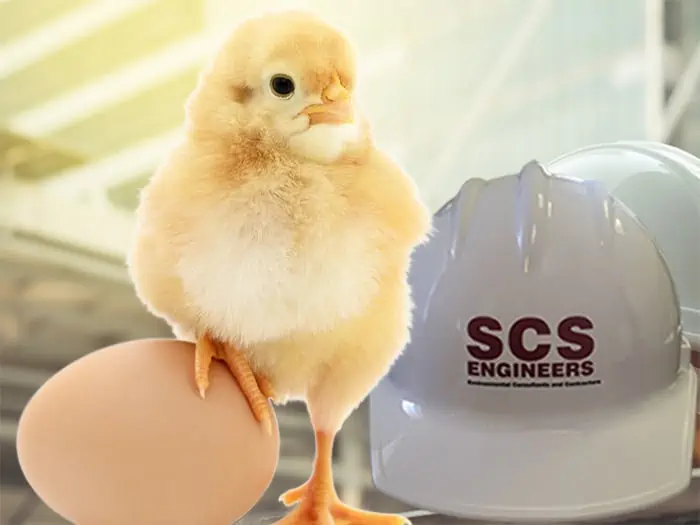


We have seen the Safety First signs in various businesses, but which comes first, health & safety or profit? Some say, without profit, a business would be out of business, and safety would no longer be a concern. However, SCS Engineers thinks safety is first in this chicken and egg paradox. After all, we are discussing peoples’ well-being, but let’s address the business aspects too.
To increase your profit and reduce your operating costs, you need to focus on your employees’ health and safety, not only trip hazards and other short-term problems. The long-term health of employees is a vital component of health & safety – protecting your people from toxic chemical vapors, having a hearing conservation program in a noisy environment, and don’t forget ergonomics in industrial and office settings.
Safety and health are both essential; they only appear to slow down productivity. In the event of an illness or incident, production could slow or stop while resolving an issue and carrying out investigations. Minimize costly production interruptions by changing your health & safety focus to a proactive preventative approach. Instead of reducing accident impacts, prevent them in the first place.
You can implement a better health & safety program and stave off the inevitable risks to personnel and business assets across factories, construction sites, and other work environments by better managing and preventing an incident from occurring in the first place. Being proactive becomes an integral part of the safety equation by achieving efficiency and value, leaving behind the ever-present focus on cost.
Taking a preventative approach instead of a reactive one, every business, employee, visitor, and stakeholder benefits. There will no longer be a question of balancing safety and efficiency. Instead, safety is a catalyst for quicker production, superior logistics, easier movement of goods and people, and an overall better working environment.
In January of 2022, two business owners were sentenced to prison for violating Worker Safety Laws, resulting in two workers’ deaths when a rail tanker car exploded. Imagine the blow to employee morale when this incident occurred. Morale is also affected by issues not nearly as dramatic, such as when an employee develops cancer from inhaling chemical vapors over the course of their career or if a co-worker needs back surgery due to incorrect lifting techniques. When OSHA or the lawyers come knocking and asking for training records and personal exposure data, what will you have to show them?
A thoughtful, proactive written health & safety program, regular training, thorough written documentation, and meticulous collection of personal exposure data show agencies and your staff that your employees are knowledgeable about health & safety. They are not exposed to stressors at levels that exceed harmful or regulatory limits. Implementing engineering or administrative controls can also reduce excessive exposure below the legal limits and recommended guidelines. Something very important to potential new hires.
About the Author:
Jed Douglas, CIH, CSP, PG is SCS Engineers’ National Expert on Industrial Hygiene, and a senior technical advisor specializing in Occupational Health and Safety issues. He has 30 years of experience as a health and safety specialist and project manager, and has managed numerous environmental projects involving: safety; soil and groundwater investigations and remediation of hazardous constituents; and, indoor air quality (IAQ) assessments for physical, chemical, and biological contaminants. Read more from this IH&S expert who shares his knowledge abd insights here: